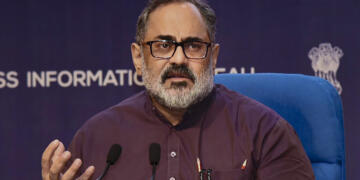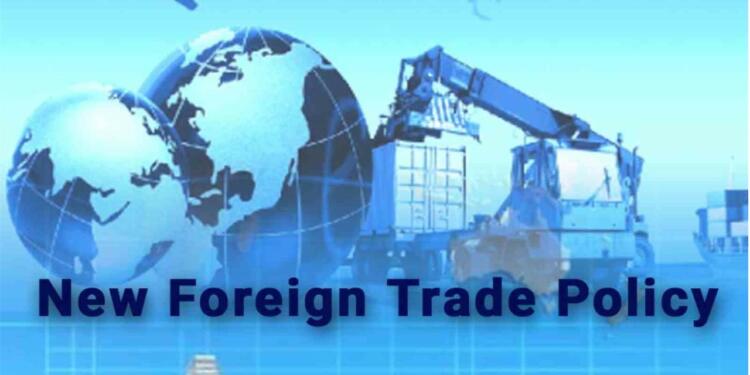New Trade Policy India: The world economy is in disarray, with world leaders clueless as to where it is headed or what can be done to prevent a possible collapse. The world is witnessing a back-to-back collapse of banks in the largest economy, that being America. There are several reasons behind the slowdown, be it the recession. The world has been witnessing an economic slowdown since 2019.
The world was already witnessing Part 2 of the great global recession when the COVID-19 pandemic kicked in. The pandemic halted all economic activities, and for months there was no sign of recovery. Then came the great inflation; the revival of demand for many goods and services went ahead of the restoration of supply through supply chains that were still clogged.
This resulted in inflation, a problem the entire world was battling, and one day Russian President Vladimir Putin decided to launch his “military operation” in Ukraine. The western nations joined hands and imposed heavy economic sanctions on Russia, thus aggravating the already growing crisis. However, all these don’t apply to India, as despite the world going downhill, India is still immune to the economic crisis and is all set to launch its new trade policy, taking exports to new heights.
India to Unveil New Trade Policy
India is all set to launch a new trade policy. The new policy aims to promote domestic manufacturing and exports of high-value products while reducing dependence on imports. This was announced by Commerce Secretary Sunil Barthwal on Wednesday. He said that the government is expected to release the new policy by the end of the month, which will have a five-year roadmap to enhance the country’s trade.
The New Trade Policy of India would replace the existing trade policy of 2015, which is set to expire on March 31, 2023. The policy for 2022–27 was slated to be announced on September 30, last year; however, the deadly pandemic did not allow things to fall into place.
The new trade policy aims to make India a global manufacturing hub and increase its share in world trade. It also aims to enhance the competitiveness of Indian exporters by reducing the cost of logistics and compliance and improving access to credit, technology, and infrastructure.
Also read: India’s top traders body CAIT demands ban on WhatsApp and Facebook over new privacy policy
What changes with the new trade policy of India?
One of the key features of the new trade policy of India is the focus on domestic manufacturing and exports of high-value products. The policy also aims to reduce the dependence on imports by promoting domestic production of critical goods and raw materials. This is in line with the government’s Atmanirbhar Bharat (self-reliant India) initiative, which aims to make India self-sufficient in critical sectors. The policy aims to achieve import substitution in sectors such as chemicals, electronics, and pharmaceuticals.
The policy also lays emphasis on the promotion of micro, small, and medium enterprises (MSMEs). The policy aims to enhance the competitiveness of MSMEs by reducing the compliance burden and improving access to credit, technology, and infrastructure.
New Export Target set
The export target is the highlight of the new policy, which has been set at $2 trillion. The target is to be achieved by 2030, said the Commerce Secretary. The new policy’s focus is expected to rely on trade promotion through Free Trade Agreements (FTAs), import substitution, import diversification, marketing via Indian missions, nudging every sector through respective ministries, and involving states in the promotion of exports.
Also read: India-UAE Business Council is some really bad news for China
India will grow amid an economic slowdown
As I told you, the entire world is facing an economic slowdown. But India remains immune to it and is expected to grow at a rate of 6-7% this year. The World Bank projected a 6.5% growth rate for the Indian economy for 2022–23.
The question now is how India will fare in the face of a global economic slowdown.The reason is that large and diverse countries have an advantage in a global slowdown since some sectors continue to do well despite others slowing. Even if manufacturing exports slow, service exports and remittances remain strong.The trend of growth through digitization is powering the growth of tier 2 and 3 cities. Now, India plans to write its history in exports.
Also read: Half a year later, cloud on Rupee-Rouble trade has not evaporated
India focuses on exports
The direction of India’s economy has changed in the past few years. In fiscal year 2021 (the pandemic year), India for the first time posted a positive trade balance, which means exports were higher than imports. India emerged as an agricultural export powerhouse this year, and countries around the world, including enemies like China, were dependent on Indian rice to feed their populations. Moreover, IT exports, which were slowing down in the last few years, have picked up due to the post-pandemic digitalization boom.
The same continued for the year 2022 as well, due to the Indian government shifting its focus on service exports. Last month, India said yes to exporting green ammonia. You might ask, “Why is it even important? The value of ammonia can be understood by the fact that the countries that lack renewable energy sources are heavily dependent on breaking down ammonia to get hydrogen and consequently reducing their emissions to get to the ‘net-zero’ target. For India, it becomes more important as it is the major importer of energy. If this trend continues, India can become an exporter under the new paradigm.
Support TFI:
Support us to strengthen the ‘Right’ ideology of cultural nationalism by purchasing the best quality garments from TFI-STORE.COM






























